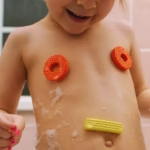
What is Lidocaine Topical?
Lidocaine acts as a local anesthetic. Lidocaine is available in many different brands and forms. This leaflet does not list all brands.Lidocaine (for skin use) is used to relieve pain and discomfort from skin irritations like sunburns, insect bites, or poisonous plants such as poison ivy or poison oak. It can also be used for minor cuts, scratches, or burns. Lidocaine topical can also be used to treat rectal discomfort due to haemorrhoids.Lidocaine intradermal devices can be used for minor medical procedures such as venipuncture and peripheral intravenous catheterization.Lidocaine topical can be used in other ways not mentioned in this guide.
Side effects of Lidocaine topical
Seek immediate medical care if you have any of these symptoms: difficulty breathing, hives, swelling in your face, lips, throat, or tongue.
Lidocaine can cause serious side effects. If you experience:
- Severe headache or vomiting;
- The medicine may cause severe irritation, burning, or stinging where it is applied.
- Swelling or redness
- After taking medicine, you may experience sudden dizziness or drowsiness.
- Confusion, speech problems, vision problems, ringing of the ears,
- Unusual sensations of heat
Side effects that are common include:
- Mild irritation at the site of application;
- The medicine accidentally applied to the skin can cause numbness.
There may be other side effects. Call your doctor for medical advice about side effects. To report adverse effects, you can contact the FDA at 1-800-FDA-1088.
Similar/related drugs
gabapentin, aspirin, acetaminophen, tramadol, hydroxyzine, naproxen, and oxycodone
Warnings
A skin-absorbed overdose of numbing medication can have fatal side effects.Avoid using large amounts of topical lidocaine or covering treated skin with bandages or plastic wraps without consulting a doctor.Keep used and unused skin patches away from children and pets. A child or pet that accidentally swallows or sucks the patch could suffer harm.
Before you take this drug
If you have an allergy to numbing medicines, then do not use lidocaine topically.Overdoses can be fatal when numbing medicine is used without medical advice (for example, during cosmetic procedures like laser hair removal). Overdoses have also happened in women who were given numbing medication before undergoing a mammogram.Be aware that cosmetic procedures can be performed without the presence of a doctor.
Tell your doctor about any of the following:
- A blood cell disorder known as methemoglobinemia in you or your family member;
- Liver disease
- If you are taking a medicine for heart rhythm,
Tell your doctor whether you're pregnant or breastfeeding.
Avoid areas where the mouth of the baby may be in contact with lidocaine.
How to take lidocaine?
Lidocaine topical should be used exactly as prescribed by your physician or on the label. This medicine should not be applied in higher amounts than prescribed.The improper use of lidocaine topically can lead to death.Lidocaine topical is available in many forms, including gel, spray, creams, lotions, ointments, liquids, skin patches, and more Take it only by mouth. Topical medicines are only to be used on the skin. Rinse with water if this medicine enters your eyes, nose, or mouth.You should read all the instructions that are included with your medicine. If you don't understand the instructions, ask your doctor or pharmacist.Do not use more than is necessary to relieve pain or numb skin. You may absorb too many of these medications if they are applied to large areas of skin or if bandages or plastic wraps are used on the treated area. Cut or irritated skin may absorb more topical medications than healthy skin.This medicine should not be applied to areas of swollen or punctured skin. Use the medicine only on skin that has been burned or blistered.Cover treated skin only if your doctor tells you to.Lidocaine topical can be applied using your fingertips or a cotton swab.A healthcare provider applies the Lidocaine intradermal devices.Keep away from moisture and heat at room temperature.Keep all lidocaine topical patches, whether used or unused, out of reach of pets and children. A child or pet that accidentally swallows or sucks a skin patch could suffer serious harm.
What happens if I miss the dose?
You may not have a schedule for lidocaine topical because it is applied as needed. If it is almost time for the next dose, skip any missed dose. Never take two doses in one go.
What happens if I overdose?
Call the Poison Help Line at 1-800-222-1222 or seek emergency medical care. If you take too much numbing medication, it can have fatal side effects.Overdose symptoms include irregular heartbeats (convulsions), slow breathing, coma, or respiratory failure.Lidocaine on the skin will not cause an overdose unless you use more than the recommended dosage.
What should be avoided?
When applying a skin patch containing lidocaine, avoid touching the sticky side.Avoid injuring the treated areas of skin while they are still numb. Avoid coming in contact with surfaces that are very hot or cold.
Interaction with other drug
Other drugs that you take are unlikely to affect the medicine applied to your skin. Many drugs interact with each other. Inform your healthcare providers of all the medicines you take, including prescriptions, over-the-counter medicines, vitamins, and herbal products.


